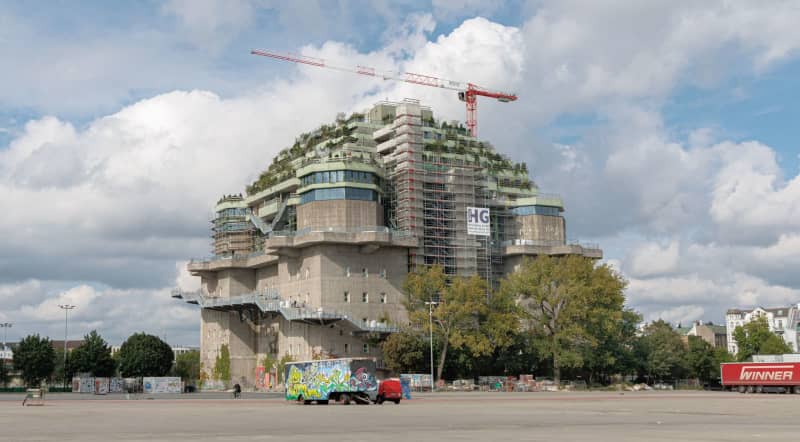A World War II bunker converted into a green hotel, bar and event space has been Hamburg’s newest tourist attraction since July.
The anti-aircraft bunker is located in Hamburg’s entertainment district of St. Pauli and is one of the large concrete forts that can still be seen in this port city and elsewhere in Germany. During air raids in the 1940s, civilians were evacuated to it.
The large Flak tower, used to shoot down enemy planes, had long been disused. It has now been raised five floors, from 38 meters to 58 meters, and in recent years has been redesigned with a vibrant exterior of plants.
From July 5, visitors to the St. Pauli bunker Discover a rooftop garden with 4,700 plants while looking out over the city and other landmarks including the harbor, the nearby Millerntor football stadium and the Elbphilharmonie concert hall.
One of the most impressive new design elements is the wide path, also lined with plants, shrubs and trees, that runs around the building and leads visitors to the roof gardens.
The building now houses an event space, restaurant, bar, café and a 134-room hotel, the Hotel Reverb run by Hard Rock. A room for a weekend costs around €500 – relatively expensive by Hamburg standards.
Inside, 80-year-old signage continues to guide visitors “to the shelters” (“Zu den Schutzräumen”). The concept also includes a memorial and information centre explaining the history of the bunker, which the Nazis had built by forced labourers in 1942.
The listed building is not only one of Hamburg’s most important monuments, but has also been a hub for creatives and nightlife for years. The famous nightclub Uebel & Gefährlich uses rooms in the bunker.
Thomas Matzen, the private investor who says he has financed the green structure with some 60 million euros, sees it as a “beacon for climate adaptation and green urban planning, far beyond Hamburg.”
The green bunker will also be used to record and analyse data on the influence of green roofs and facades on temperature, evaporation and rainwater over a period of five years, as part of a scientific project by the Technical University of Berlin.
Some critics have complained that the bunker is not green enough, a criticism that the developers have dismissed. “Of course, the final overall impression only comes about once the shrubs and vines have reached the desired size,” a spokesman said. “And as every gardener knows, that simply takes time.” The bunker can and will be replanted if necessary, the developers say. “The St. Pauli bunker will be just as green as planned.”
According to the city, there are still around 650 bunkers in Hamburg today. These are spread throughout the city and serve as a museum or climbing wall, among other things.

